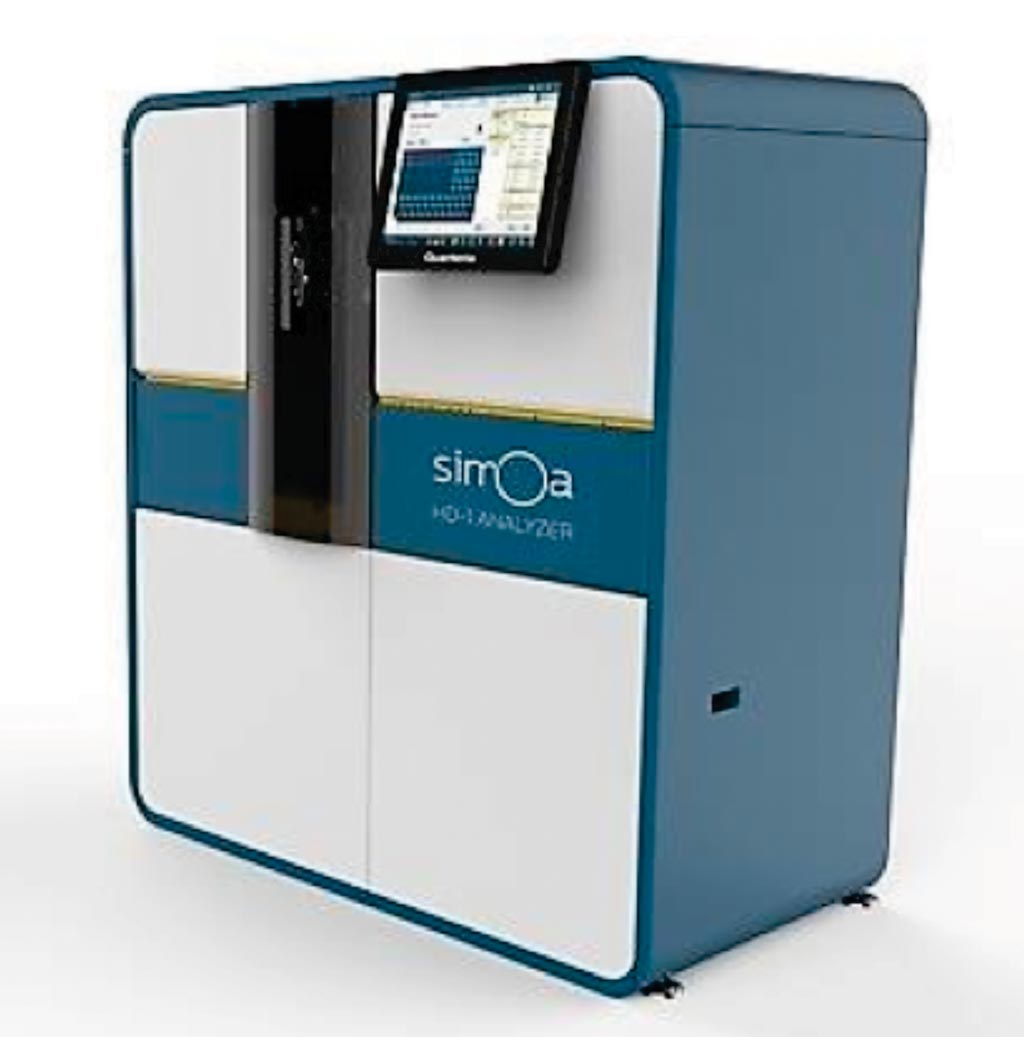Blood-Based Biomarker Assessed for Subtle Brain Injury
By LabMedica International staff writers
Posted on 10 May 2018
A high-sensitive blood test can aid concussed hockey players when it might be safe to return to play. The test has identified a superior blood-based biomarker for assessing subtle brain injury.Posted on 10 May 2018
A study has compared neurofilament light (NfL) and tau as blood-based biomarkers for acute sports-related concussion (SRC) and determined whether their concentrations at different time points after the injury are associated with prolonged time to return to play (RTP).

Image: The Simoa 2.0, ultrasensitive immunoassay platform used for measuring plasma tau and serum NfL (Photo courtesy of Quanterix).
Neuroscientists at the Sahlgrenska Academy (Gothenburg, Sweden) studied a total, 288 hockey players, which 105 suffered a concussion during three seasons from 2012 to 2015. From 87 of these players, blood samples were taken 1, 12, 36 and 144 hours (six days) after the concussion. A fifth sample was taken at the time when the person was determined fit to return to unrestricted competition.
Plasma tau and serum NfL were measured with a commercially available immunoassays using digital array technology. Samples for S100 calcium binding protein B (S100B) and neuron-specific enolase (NSE) were analyzed on a Modular E170 instrument. The limit of detection for the NfL assay is 0.29 pg/mL, which is approximately 100-fold more sensitive than conventional assay for the protein, while the limit of detection for tau is 0.02 pg/mL, which is over 1,000-fold more sensitive than conventional immunoassays for the protein.
The results show that it was the levels of the protein neurofilament light (NfL) that had the clearest connection to the severity of concussion, measured as the number of days it took for players to return to play. The levels of the other biomarkers that were studied (tau, S100B and, NSE) decreased quickly and could thereby not indicate how injured the players were after 7 to10 days, a time point many players returned to play in the study.
The authors concluded that serum NfL outperformed tau, S100B, and NSE as a biomarker for SRC. From a clinical standpoint, serum NfL may be useful to identify individuals at risk of prolonged PCS, and may aid in biomarker-informed decisions with regard to when RTP should be considered. Pashtun Shahim, MD, PhD, the lead author of the study, said, “The strength of this study is that we longitudinally followed how these biomarkers are released and cleared from the blood. What we observed was that NfL was released within an hour after the concussion, and then it increased over time in players who had prolonged symptoms.” The study was published on April 13, 2018, in the journal Neurology.
Related Links:
Sahlgrenska Academy














